Related Research Articles
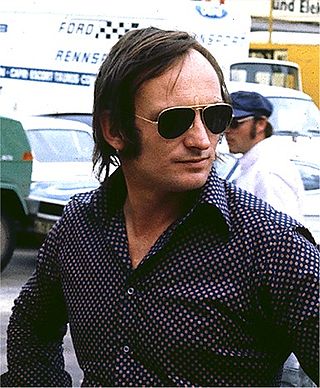
Christopher Arthur Amon was a New Zealand racing driver and motorsport executive, who competed in Formula One from 1963 to 1976. Widely regarded as one of the greatest drivers to never win a Formula One Grand Prix, Amon won the 24 Hours of Le Mans in 1966 with Ford, as well as the 24 Hours of Daytona in 1967 with Ferrari.
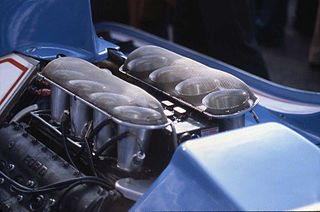
The DFV is an internal combustion engine that was originally produced by Cosworth for Formula One motor racing. The name is an abbreviation of Double Four Valve, the engine being a V8 development of the earlier four-cylinder FVA, which had four valves per cylinder.

Dallara Group S.r.l. is the largest multi-national Italian race car manufacturer, founded by its current President, Giampaolo Dallara. After working for Ferrari, Maserati, Lamborghini and De Tomaso, in 1972 in his native village of Varano de' Melegari (Parma), he created Dallara Automobili.
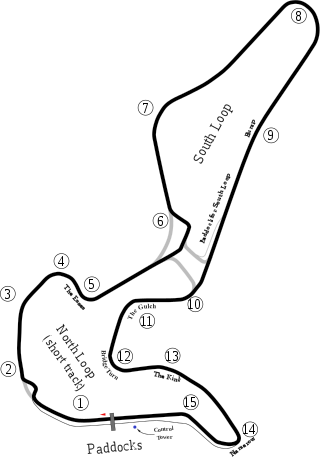
Circuit Mont-Tremblant is a 4.218 km (2.621 mi) race circuit located approximately 130 km (81 mi) north of Montreal, Quebec, in the city of Mont-Tremblant, Canada. It is the second-oldest existing race track in Canada, and was originally known as Circuit Mont-Tremblant-St-Jovite until it was renamed in the 1970s. Set in the shadow of the Mont-Tremblant ski hill, the twisting fifteen-corner track uses the natural topography and elevation of the land.

Harvey Ernest Postlethwaite was a British engineer and Technical Director of several Formula One teams during the 1970s, 1980s and 1990s. He died of a heart attack in Spain while supervising the testing of the aborted Honda F1 project.
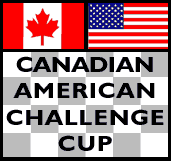
The Canadian-American Challenge Cup, or Can-Am, was an SCCA/CASC sports car racing series from 1966 to 1974, and again from 1977 to 1987.

The Ferrari 312T was a Ferrari Formula One car design, based on the 312B3 from 1974. In various versions, it was used from 1975 until 1980. It was designed by Mauro Forghieri for the 1975 season, and was an uncomplicated and clean design that responded well to mechanical upgrades.

The Ralt RT1 is a race car chassis produced by Ralt, and was the first modern car produced by the company. It saw widespread use in a number of different motorsports categories, mostly open-wheel racing, but later including sports car racing. It was powered by a number of different four-cylinder engines of about 1.6 L (98 cu in) in displacement, of different origin, including Hart, Cosworth, Toyota, and Volkswagen engines.
Walter Wolf Racing was a Formula One constructor active from 1977 to 1979, which won the first race the team entered. It was owned and run by Canadian Walter Wolf. The team was based in Reading, UK but raced with the Canadian licence.
The 1977 Can Am season was the tenth running of the Sports Car Club of America's prototype-based series. Despite the revived name, however, the new series was entirely unrelated to the previous series which had folded in 1974. Most of the competitive cars were based on Formula 5000 chassis. Also, the first time under 2-litre cars were allowed to race, but with no separate class. Patrick Tambay was declared champion, winning six of the nine races that year for Carl Haas. While Lola chassis dominated the series, a Chevrolet powered Schkee DB1 driven by Tom Klausler won the first race at Mont Tremblant. Other competitive cars included the 1974 champions Shadow, who now used Dodge engines and Wolf with a Dallara-built chassis. While Chevrolet was not the only engine supplier, they swept the entire season. This season also marked a resurgence of interest in SCCA events, with Can Am accompanying F5000 and the Trans Am Series seeing a mild resurgence in the eighties.
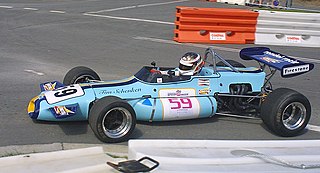
The Brabham BT36 was an open-wheel Formula 2 race car, designed by Ron Tauranac, and developed and built by British racing team and constructor, Brabham, for the 1971 European Formula Two Championship. Its best result that season was a 2nd-place finish in the championship for Argentine Carlos Reutemann, despite winning only one race, taking one pole position. His consistency and pace made this possible, scoring 6 podium finishes, and finishing the season with 40 points. The Brabham BT36 was constructed out of a complex tubular space frame, and was powered by the naturally-aspirated 1.6 L (98 cu in) Ford-FVA Cosworth four-cylinder engine, which produced 220 hp (160 kW), and drove the rear wheels through a 5-speed Hewland F.T.200 manual transmission.

The Ralt RT4 is an open-wheel formula racing car, designed, developed, and built by Ralt for Formula Atlantic in 1980. It was later converted into a closed-wheel prototype and used in the revived Can-Am series between 1982 and 1985, where it achieved only modest success. In Can-Am competition, the car achieved 1 podium finish, 1 class victory, and a best result of a 2nd-place finish.
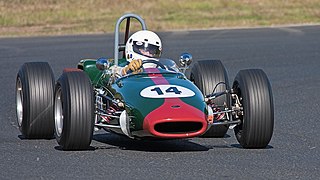
The Brabham BT14 was an open-wheel mid-engined formula racing car, designed, developed and built by British manufacturer and constructor Brabham, in 1965. A total of 10 models were produced. It was specifically constructed to compete in Formula Libre racing. It competed in motor racing between 1965 and 1968; winning a total of 10 races, scoring 22 podium finishes, and clinching 4 pole positions. It also contested the 1967 European F2 Championship season, competing in 7 races, but with no success; scoring no wins, pole positions, podium finishes, or scoring any points. It was powered by a naturally-aspirated 1.6 L (98 cu in) Ford twin-cam four-cylinder engine, which droves the rear wheels through a conventional 4-speed manual transmission.
The Ferrari 612P, is a purpose-built Group 7 prototype, designed, developed and built by Scuderia Ferrari, specifically intended to be used in the North American Can-Am sports car racing series in 1968 and 1969.

The VDS-001 was an American closed-wheel sports prototype race car, designed, developed, and built by Racing Team VDS for the revived Can-Am series, in 1981. It is based on the Lola T530. Geoff Brabham won the 1981 Can-Am Championship with the car, despite only winning 2 of the 10 races that season. It won a further 4 races in 1982 Can-Am Championship in 1982, being driven by Al Holbert. It was later exported to England, where it competed in the British Thundersports series, and achieved great success. Its sports car racing career spanned 9 years (1981-1988), and over that period of time, it won a total of 19 races, achieved a total of 26 podium finishes, and scored 21 pole positions. As with most Can-Am cars of the time, it was powered by a 5.0 L (310 cu in) Chevrolet small-block motor.

The Mallock U2 is a race car, designed, developed and built by Major Arthur Mallock and later his son Richard. Arthur’s first customer race cars were simply called U2. The first of which the Mk1 were sold as kits in 1958. By about 1969 the name changed to Mallock U2. It was designed to compete in both single seater racing,eg Formula Junior and with the addition of cycle type mudguards in Sportscar racing. By 1965 a UK series was established to cater for “Lotus 7 type cars” or Clubmans which included the Mallock U2. purpose-built It was a versatile and highly effective front engined race car. It also competed in Formula Junior, Formula Ford, and Formula Three events. The chassis was constructed out of a steel tubular spaceframe, and it was later equipped with a De Dion rear axle, in 1972. It was very light, weighing only 948 lb (430 kg). It was powered by a number of different four-cylinder engines; including an 1,172 cc (71.5 cu in) Ford Sidevalve engine, a smaller 997 cc (60.8 cu in) Ford Kent engine, an 1,100 cc (67 cu in) BMC A-series engine, and even a 1.5–1.6 L (92–98 cu in) Ford-Cosworth SCA/Cosworth FVA engine. This drove the rear wheels through a conventional 4-speed manual transmission; first used in the Austin A30.

The Brabham BT17 was a one-off sports prototype race car, designed by British-Australian engineer Ron Tauranac, and developed and built by British manufacturer, constructor, and Formula One racing team, Brabham. It was built to Group 7 racing specifications, in 1966, and was the only Group 7 sports car built by Brabham. Only one single model was produced. It only contested three sports car races, scoring no wins, podiums, pole positions, or points finishes.
The Dallara SN01, also known as the Dallara T02, is an open-wheel ground effect formula racing car, designed, developed and built by Italian manufacturer and constructor Dallara, for the one-make World Series by Nissan spec-series, between 2002 and 2004. It was powered by a naturally-aspirated, 3.0 L (180 cu in), Nissan VQ engine, producing between 410–420 hp (310–310 kW). The car weighed 565 kg (1,246 lb) without driver, and about 645 kg (1,422 lb) with the driver. It was later succeeded by the Dallara T05, in 2005.
The Alba AR3, and its derivative, the Alba AR3-001, were a series of ground effect IMSA GTP/Group C junior (C2) sports prototype race car, designed, developed and built by Italian manufacturer and constructor, Alba Engineering in 1984, and used in sports car racing until 1988. Its best result was two 4th-place finishes; first at Lime Rock in 1984, being driven by Gianpiero Moretti, and the second at Kyalami in 1987, being driven by Maurizio Gellini and Ranieri Randaccio. It was powered by a number of different engines, including a naturally-aspirated 4.5 L (270 cu in) Buick V6 engine, a turbocharged 4.0 L (240 cu in) Buick Indy V6 engine, a 1.3 L (79 cu in) Mazda 13B 2-rotor wankel rotary engine, a naturally-aspirated 3.0 L (180 cu in) Ford-Cosworth DFV Formula One engine, and a derived 3.3 L (200 cu in) Ford-Cosworth DFL.
The Lola T220, and its evolution, the Lola T222, are Group 7 sports prototype race cars, designed, developed, and built by the British manufacturer and constructor Lola, to compete in the Can-Am championship from the 1971 season. It also took part in the European Interserie championship.
References
- ↑ "Wolf – F3History". www.f3history.co.uk.
- ↑ "Wolf-Dallara WD1" . Retrieved 1 July 2022.
- ↑ "Wolf WD1 Chev – primotipo…". primotipo...
- ↑ "Wolf Dallara WD1 1977 Can Am Car ex Amon / Villeneuve". racecarsdirect.com. 17 July 2023.
- ↑ "Wolf Dallara WD1" . Retrieved 1 July 2022.
- ↑ "Wolf Dallara WD1" . Retrieved 1 July 2022.
- ↑ "History – Walter Wolf World".